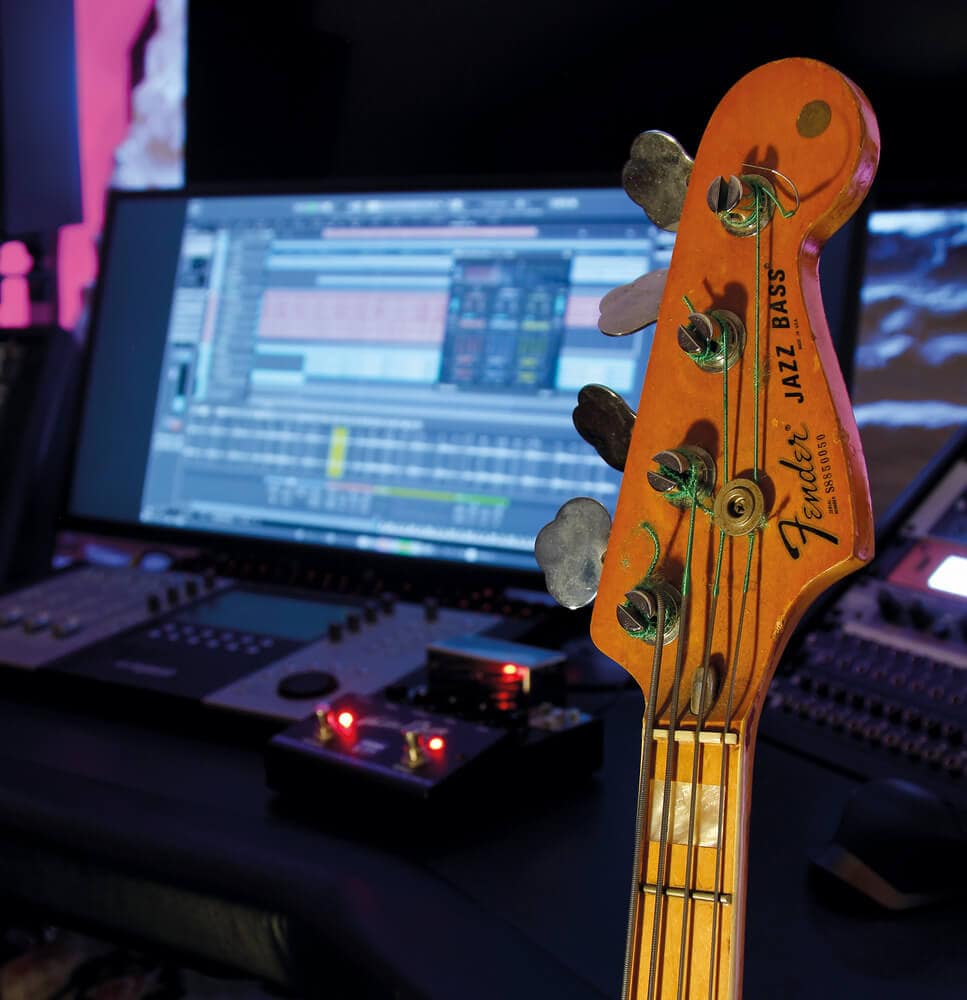DI Bass is a great way for producers to get started recording killer bass tracks without spending a fortune on studio time. In addition, DI Bass gives you the flexibility to experiment with different sounds and techniques until you find the perfect groove for your track.
So, do you want to learn how to record killer bass tracks at home? If so, you’ve come to the right place! This blog post will teach you everything you need about recording bass guitars. We’ll discuss different techniques and methods you can use in your recordings. So whether you’re a beginner or an experienced producer, this blog post has something for everyone!
What Is DI Bass?
DI Bass is an abbreviation for “direct injection.” The bass signal is directly injected into the mixing console or audio interface. This is opposed to an amp, which amplifies the signal before it is sent to the mixing console.
There are many benefits to recording with a DI box. For starters, it gives you more control over the sound of your bass tracks. You can experiment with different EQ settings and effects to find the perfect sound for your song.
Another benefit of DI Bass is that it is much easier to record than an amplified bass. You don’t have to worry about microphone placement or bleeding from other instruments. This makes it the perfect choice for recording in a home studio.
Finally, DI Bass is more versatile than an amplified bass. You can use it for various genres, from rock to pop to jazz. So if you’re looking for a versatile bass sound, DI Bass is the way to go.
How To Record DI Bass
Now that we’ve discussed DI Bass and its benefits let’s learn how to record it. Here are a few tips to help you get started:
1) Use an active DI
Most passive DIs will work just fine for recording bass guitar. But if you want the best sound possible, it’s worth using an active DI. Active DIs have a built-in preamp that boosts the signal before it reaches the recorder or mixer. This gives you a cleaner, fuller sound that will shine on a recording. If you’re unsure which active DI to choose, ask your local music store for recommendations. They’ll be able to point you in the right direction.
2) Use a clean bass tone
When recording bass, it’s important to use a clean tone. This means no distortion or overdrive. The goal is to capture the natural sound of the bass, so avoid any effects that would color the sound. If you’re unsure how to get a clean tone, turn down the gain on your amplifier and back off on the EQ controls. This will give you a nice, clean sound that is perfect for recording.
3) Use a mic for more bottom end
If you want more bottom end on your recording, try using a mic instead of a DI. Place the mic about 6-12 inches from the bass speaker and aim it toward the center of the cone. This will capture more low frequencies and give your recording more power and punch. Just be sure to use a pop filter to reduce any unwanted plosives (breath sounds).
4) Use a software interface
Another option for recording DI bass is to use a software interface. This is essentially a digital version of a mixer that gives you more control over the sound of your bass. The advantage of this method is that it’s less expensive than a hardware mixer. The downside is that it can be more complicated to set up and use.
5) Make sure your DI is properly grounded
It’s also important to make sure that your DI is properly grounded. This will help to avoid ground loops, which can cause all sorts of problems with your recording. If you need help properly grounding your DI, you can consult the manual that came with it or ask a professional for help.
6) Use a high-pass filter
One last tip for getting a great bass sound when recording is to use a high-pass filter. This will help to remove any low frequencies that might be causing problems with your recording. Set the cutoff frequency for the filter at around 80 Hz, and then adjust it as needed depending on the sound of your bass.
Conclusion
So there you have it! These are just a few tips for recording DI bass. With these in mind, you should be able to get a great sound for your next recording project. However, don’t hesitate to ask a professional for help if you still have trouble. They’ll be able to give you even more tips and tricks for getting a great bass sound. Thanks for reading!


